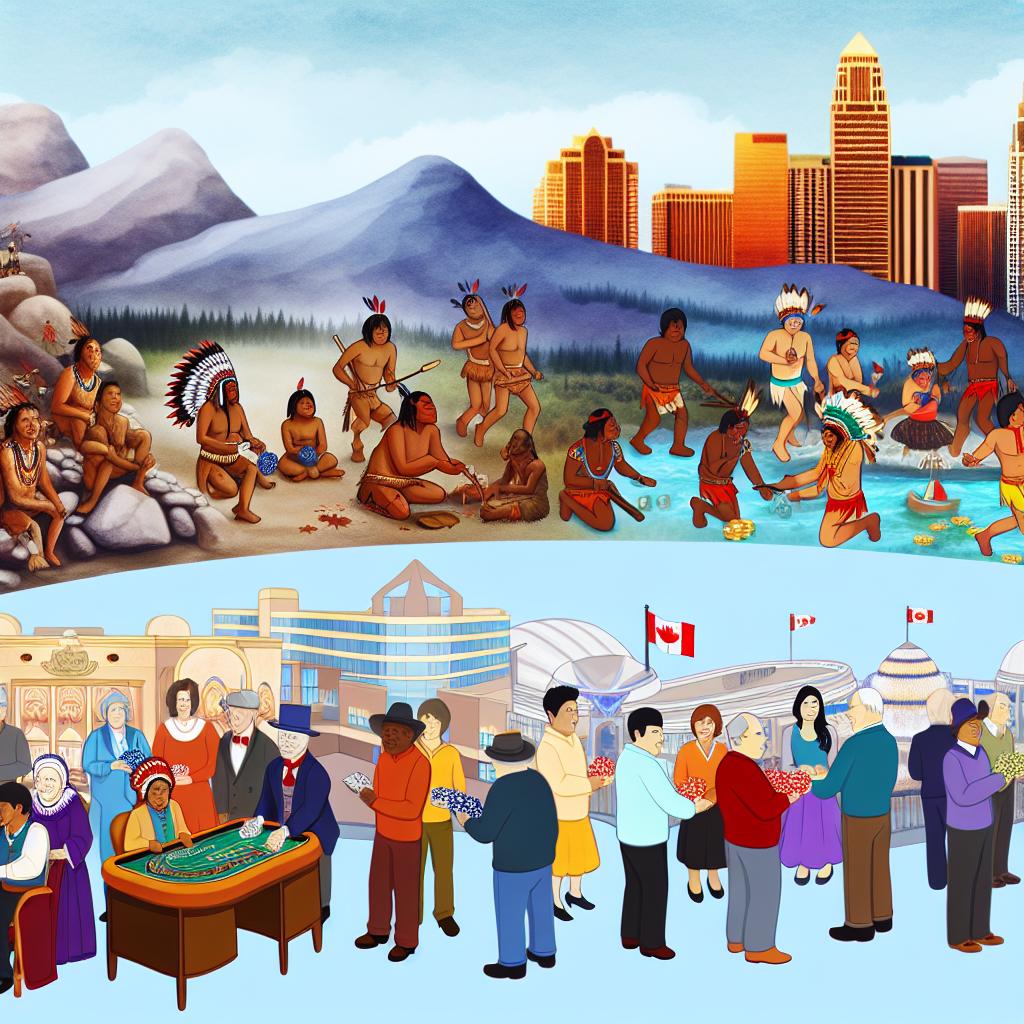The Origins of Casino Gambling in Canada
Casino gambling in Canada has evolved significantly over the years, tracing roots that extend deep into the nation’s cultural and legislative fabric. The practice, which now forms an integral part of the cultural and economic landscape, has a history that reflects both Indigenous traditions and the evolving stance of legislation in the country. From the early forms of wagering engaged in by Indigenous peoples to the contemporary online platforms of today, the story of casino gambling in Canada is both fascinating and complex.
Early Legislative Developments
The history of gambling legislation in Canada is marked by a gradual transition from outright prohibition to regulated permissibility. In the mid-19th century, the Canadian government responded to social concerns by imposing strict controls on gambling. This culminated in the broad prohibition of gambling under the Canadian Criminal Code in 1892. Yet, even these early laws allowed for some minor exceptions, such as raffles and certain charitable gambling activities. These exceptions were crucial as they laid the groundwork for more discretionary gambling activities in later years.
It wasn’t until the latter half of the 20th century that significant legislative changes took root. The pivotal moment came in 1969 when the Canadian Parliament made amendments to the Criminal Code. These amendments allowed provinces and territories the autonomy to manage and operate lottery schemes. This shift was not just a change in the legal code but a turning point that enabled more structured and regulated gambling, paving the way for the development of modern casino enterprises.
The Rise of Modern Casinos
The transition of casino gambling from a peripheral pastime to a mainstream industry occurred largely during the 1980s. With provinces gaining autonomy over gambling regulation, they began to explore the potential economic benefits of casinos. This period saw the establishment of the first government-operated casino, which opened its doors in Winnipeg in 1989. This milestone set a precedent, as other provinces quickly followed suit, recognizing the potential for casinos to generate substantial revenue through taxation and tourism.
Throughout the 1990s and into the early 2000s, Canada experienced a boom in the casino industry. Provincial governments capitalized on this new revenue stream, not only to boost their economies but also as a tool to eliminate illegal gambling. The structured, regulated environment of government-operated casinos provided a viable and attractive alternative to underground gambling operations, which were prevalent at the time.
Current Landscape of Casinos in Canada
Today’s Canadian casino industry is a robust part of the national economy, deeply intertwined with the hospitality and tourism sectors. Each province in Canada has established its regulations governing the operation of casinos, resulting in a diverse array of gambling venues that cater to local tastes and attract international visitors. Ontario, Quebec, British Columbia, and Alberta are particularly noteworthy for their vibrant casino culture. Ontario, for example, boasts a multitude of casino resorts, including the renowned Casino Rama, which attracts visitors from all over the world.
Similarly, Casino de Montréal in Quebec is a major attraction that highlights the significant role casinos play in regional tourism. Alongside traditional physical establishments, the advent of digital technology has also spurred the growth of online gambling platforms. These platforms extend the reach of casinos beyond their physical locations, offering residents access to a wide range of games such as poker, blackjack, and slots from the comfort of their homes.
Regulatory Environment and Future Trends
The regulatory framework governing casino gambling in Canada is dynamic and subject to frequent revisions. As provinces look to maximize the economic benefits of gambling, they are simultaneously tasked with promoting responsible gambling practices. This dual focus is reflected in policies aimed at curbing gambling addiction while optimizing the economic advantages casinos bring. Moreover, public sentiment towards gambling plays a significant role in shaping provincial policies, as governments aim to address social concerns related to gambling’s impact on their communities.
Looking forward, the Canadian gambling landscape is poised for evolution driven by technological advancements and shifting regulatory stances. The integration of virtual reality and blockchain technologies into gambling experiences promises to innovate the way Canadians engage with casinos. Additionally, ongoing discussions regarding the legalization of single-event sports betting and the development of indigenous-operated casinos suggest potential growth areas. These discussions are indicative of broader shifts in the industry, highlighting an interest in expanding both the diversity and the inclusivity of gambling operations across the nation.
In summary, the history and development of casino gambling in Canada illustrate a transition from a highly restricted activity to a regulated, economically beneficial industry. As technological innovations continue to emerge and regulatory frameworks evolve, Canada’s gambling landscape will likely expand and diversify further, offering both challenges and opportunities for stakeholders at every level.
This article was last updated on: January 14, 2025

